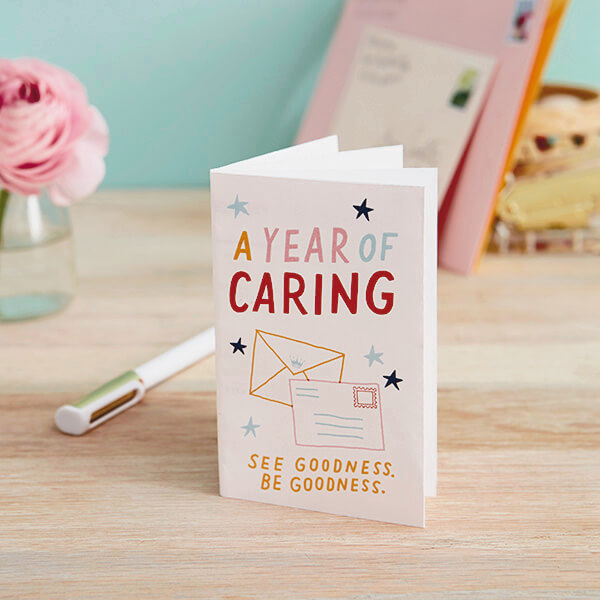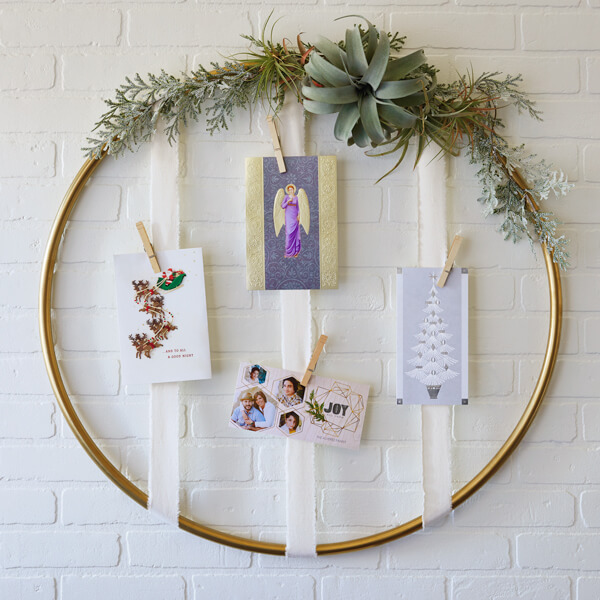Vegetable stamping: How to make simple, modern prints with produce
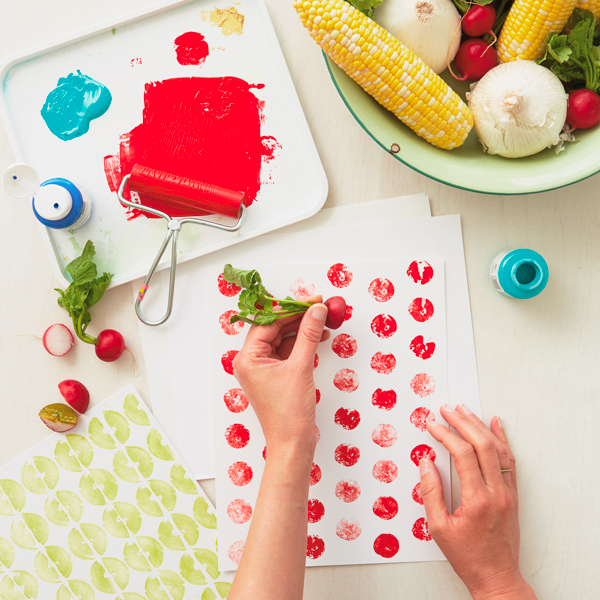
There are so many reasons to try fruit and vegetable stamping: It’s surprisingly creative. It’s easy. It uses stuff you have on hand. Kids can play, too. And making simple prints with fruits, veggies and acrylic paint is a chance to explore creating textures and patterns.
So gather some friends and/or the kids and raid the produce section, then try these vegetable stamping techniques for yourself—it’s a perfect summer project!
Inspired? Create and share by tagging @HallmarkStores.
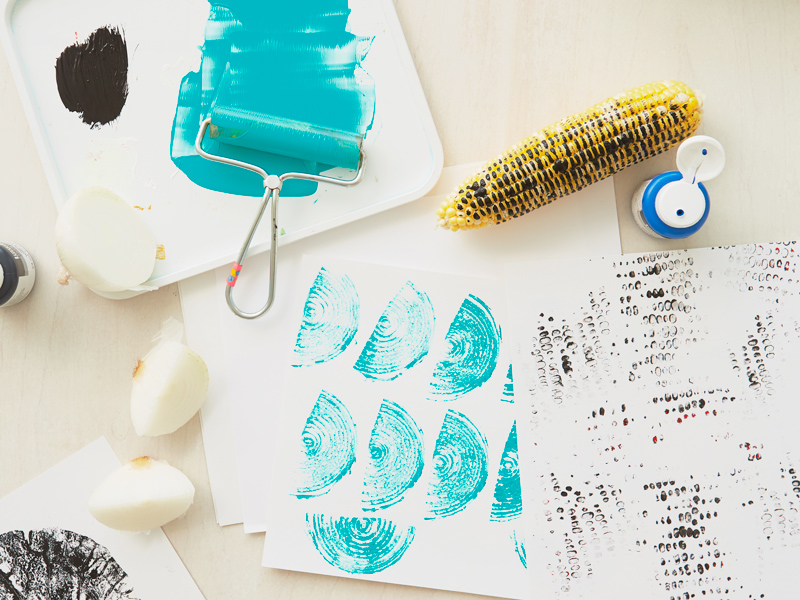
More on why you should try vegetable stamping
We’ve got a whole garden full of reasons we love this craft (minus the dirt and bugs 😊):
- It gives you the most fun incentive ever to stock up on fruits and vegetables. Brussels sprouts might not be the typical highlight of your week, but knowing you’ve got a creative craft to do with them could change that, especially if little ones are involved.
- Speaking of little ones, this is the perfect way to get them excited about fruits and vegetables. Not only is this craft easy enough for them to help, but it might make unfamiliar veggies seem less scary and less likely to be given the stink eye at the dinner table.
- It’s an inexpensive way to explore your crafty side. Creative hobbies can be costly, especially when you’re not sure how much time and money you want to invest in a new endeavor long-term. That’s why we love crafts like this one; the materials are easy to find and you get to explore your inner artist.
- Versatile is an understatement. We focused on some of our favorite summer produce this time, but you can do this activity in any weather or season. See link in the gray box below!
- It’s a creative rut antidote. If you already do consider yourself quite creative, this is a fun way to switch it up from your usual craft and get inspired by something unconventional.
- You can make DIY home decor. Use the patterns you stamp to create fun, colorful seasonal art at a fraction of the cost versus what you’d find at local stores.
- It’s a way to get really cool textures and patterns that you can’t achieve with a brush or sponge. If you’re working on a project and don’t have the time or money to grab new materials, you might already have what you need in the fridge!
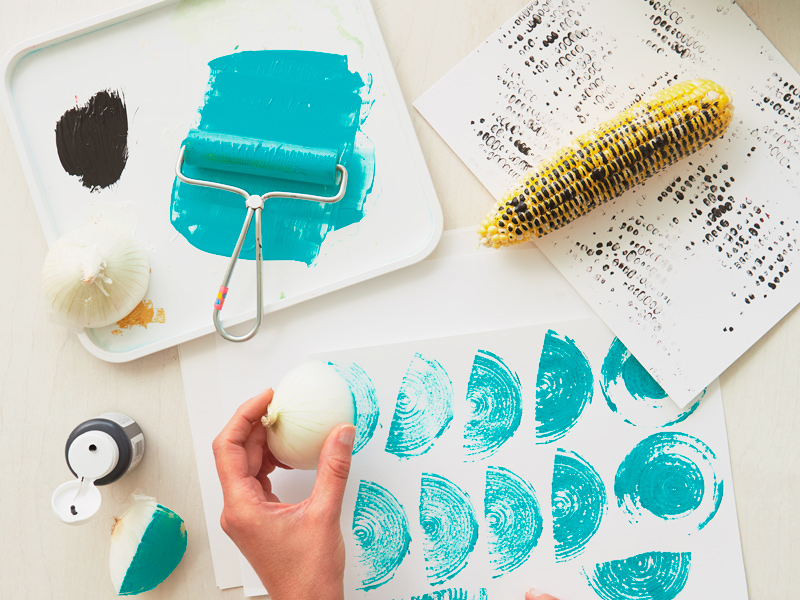
Supplies for vegetable stamping
- Cutting board
- Very, very sharp knife (a dull knife will make your details mushy; keep it out of kid reach!)
- Vegetables (try radishes, artichokes, carrots, onions, celery, mushrooms, peppers, okra, lettuce, corn, kale)
- Fruit (apples, oranges, melons, kiwi)
- Plant clippings
- Acrylic paint
- Tray, acetate sheet, or paper
- Ink brayer, glass or plexiglass (a brayer helps you get an even coat on the surface of large items)
- Ink pad (for covering small items with ink, instead of using a brayer)
- Paint brush (for adding paint to the surface of items, instead of using a brayer)
- Paper for prints
Pro tip: You can also use fabric paint and stamp T-shirts, tote bags or tea towels. Cuuuuute!
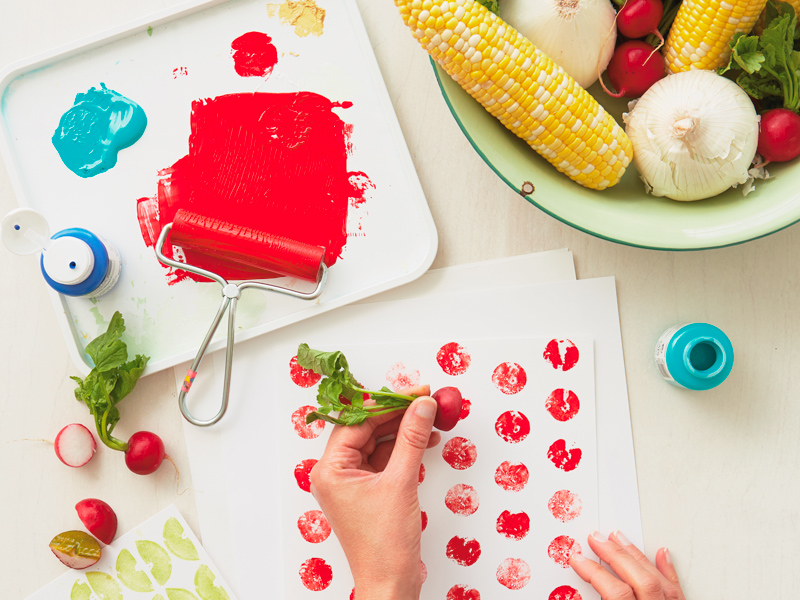
How to make fruit and vegetable prints
Step 1: Prep the fruits and veggies.
Cut your fruits and vegetables into pieces. Try cutting at different angles to get different details. Use the whole thing, inside and out, including leaves. We’re serious about the sharp knife, too—it’ll give you the best details.
Step 2: Cover the veggies with paint.
Add a bit of paint to a tray, acetate sheet, or paper, then roll the brayer in paint to cover it. Next, roll the brayer across the surface of your fruit or vegetable.
Step 3: Stamp your designs.
Press the paint-covered fruit or veg onto your paper and repeat. That’s it!
If you’re wanting to create a more intentional design, here are some fun ideas to try:
- Try a single color on one or two shapes and stamp in a grid.
- To create a pattern, simply stamp, then turn your shape 180 degrees and stamp again.
- Try a single big, simple shape in the center of a piece of paper, like a big kale leaf.
- Layer shapes and colors to make abstract images.
- Play with the ways you add paint to the fruits or vegetables—roll it on, paint it on—and how much paint you add.
- Cut simple designs into the surfaces of potatoes, turnips or carrots.
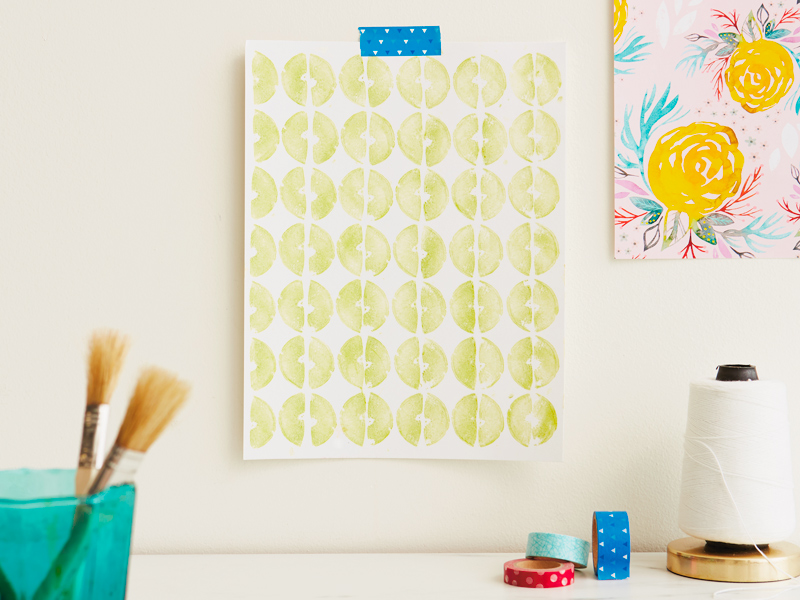
We hope you’re ready to start experimenting with your own fruit and vegetable stamping fun—or at the very least, that you have a newfound appreciation for how cool fruits and vegetables are. 😂
Hungry for even more arts, crafts & DIYs? Check these out:
Shop Summer
See allYou may also like
See more-
Christmas Sweet dreams, Santa!
Catch Santa napping on the job with this Snoring Santa Keepsake Ornament featuring sound and motion. With every snore...
-
Kwanzaa What is Kwanzaa?
What is Kwanzaa? A festival of lights rich in African symbolism, it takes place each year from December 26th through ...
-
Christmas Advent calendar activities for adventurous families
It’s time to start the countdown. Maybe it’s about being mindful…or counting your blessings…or preempting your kids a...
-
Summer Ways to celebrate Juneteenth
While Juneteenth was officially recognized as a federal holiday in 2021, this pivotal moment in history has been cele...
-
Christmas Christmas and Kwanzaa: Keeping family holiday traditions and finding your own
Whether you’re single or starting a family, religious or agnostic, someone who celebrates Christmas and Kwanzaa or ju...
-
Halloween Make ghosts and goblins feel right at home this Halloween
Light up your home with haunting Halloween seasonal decor. 🎃👻 Shop now at Hallmark Gold Crown stores or at Hallmark.com.
-
Halloween No scaredy cats around here!
When this black cat crosses your path, you know fun can't be far behind. 😻 🧙♀️ Shop the Zip-A-Long Cat in Hallmark G...
-
Halloween While you’re waiting for The Great Pumpkin this Halloween…
Fly around the pumpkin patch with Zip-a-long Snoopy! 🎃 Shop more frightening finds in Hallmark Gold Crown stores and ...
-
Halloween Light up the night with frightful fun!
Could it be? Could it be!? Yes it is! It’s the Peanuts® Snoopy and Woodstock Halloween figurine! 🎃 🐶 Find it and more...
-
Halloween Where cozy meets mischief and magic
Make some magic this Halloween with this Hocus Pocus hooded blanket. 🧙♀️👻Find more Halloween essentials in Hallmark ...
-
Gifting Relive a favorite from your childhood!
Fill your home with a few small joys inspired by Disney’s “It’s a Small World” 🩵🎎 Shop the collection at Hallmark Gol...
-
Halloween Which house will you be sorted into?
The Harry Potter™ Sorting Hat™ Mug plays sound whenever you lift the lid. Find this chatty mug in Hallmark Gold Crown...
-
Encouragement How to support caregivers
It’s often hard to know how to support a caregiver. Most caregiving checklists out there hit the major topics like me...
-
Love 50 different ways to say I love you
You don’t need to wait for a special occasion to remind that certain someone how much he or she is loved. Spice up yo...
-
Graduation 15 graduation quotes
Celebrate your favorite grad’s milestone with the wit and wisdom of Hallmark writers, fans and others. We’ve rounded ...
-
Congratulations How to congratulate someone
Congratulating others is easy and fun, right? Like when your friend worked really hard and got that awesome job makin...
-
Care & Concern Be more caring with a kindness journal
It's obvious the world could use more kindness. So this year, why not make "be more caring" your number one resolutio...
-
Fall Día de Muertos: A celebration of life and love
Día de Muertos, Day of the Dead, is a holiday originally celebrated in the southern and central parts of Mexico and i...
-
Card Ideas Card messages for kids: What to write in a kid’s holiday card and more
My 3-year-old was having a hard time at preschool drop-off. Dragging his feet. Asking to stay home. This went on a fe...
-
Christmas 6 Creative Christmas Card Display Ideas
Holiday card season is here: Our mailboxes are about to fill up with festive envelopes with pretty stamps and familia...

















